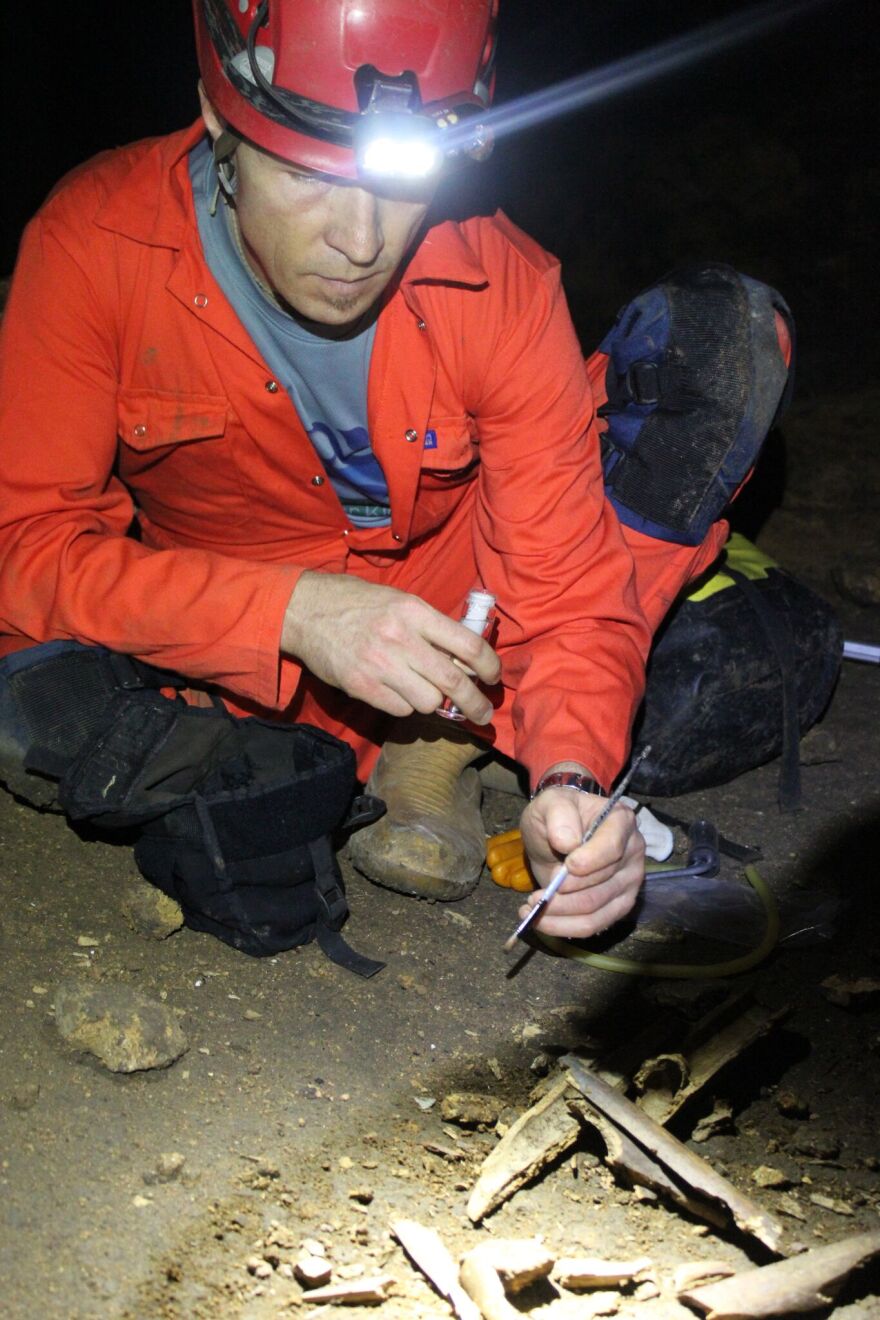A biologist from Flagstaff recently discovered eight new invertebrate species while investigating tropical caves in southeastern China near the Vietnam border.
Jut Wynne, an associate professor at Northern Arizona University, was studying water pollution within the cave system when he came across the six millipedes and two scorpions. They have similar characteristics, as is often the case with animals that evolve in dark, damp caves.

“They typically have elongated appendages and antenna that would be covered in hair, or what entomologists technically call sedi, and those are sensory apparatus for the animal. And they’re also de-pigmented, like this yellow-ish, whitish color. And if they’re large enough to where you can see their eyes, or lack thereof, they’re typically eyeless or have highly reduced eyes,” he says.

The scorpions are technically pseudo scorpions—tiny—but without tails or stingers. Instead, they have venom sacks attached to long pinchers used to grab and poison prey. Wynne’s favorite among the newly discovered cave creatures is a millipede belonging to the family of dragon millipedes. It has spines running the length of its body.

“It’s completely depigmented, it has these really elegant, long legs and antenna and just a lot of fun to watch them move through the cave because in this particular cave where we found them, and actually the only cave where we found them, there were so many that they literally carpeted the floor,” he says.
Wynne will analyze the creatures for pollutants. He hopes his research will help inform the Chinese government on efforts to curtail environmental pollution. And, he believes, there are more undiscovered species within the cave system.









